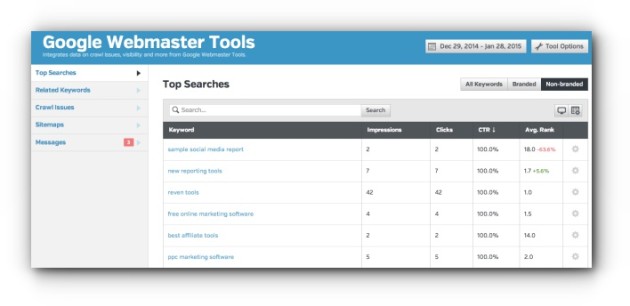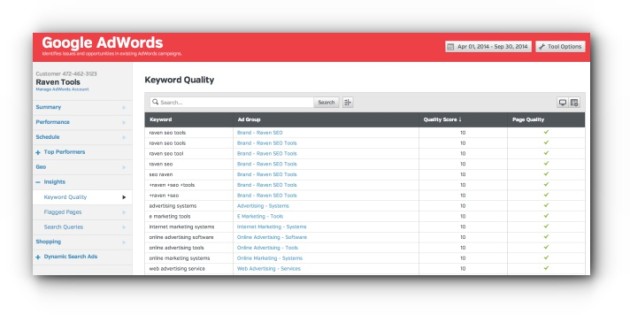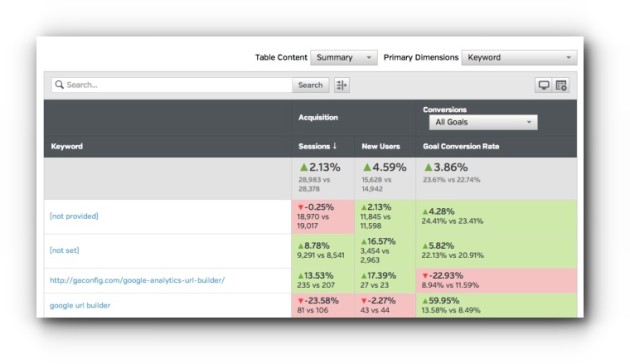For years, I thought of myself as an SEO purist. Maybe it was a control issue. I thrived on my ability to influence search results based on my awareness of user behavior, how and where to place a link for maximum benefit and even how to create a unique query space, just to see if I could.
I thought pay-per-click (PPC) advertising was for wimps.
Well, the barriers to entry have changed. In the 90s, any website with a pulse was ranking. The World Wide Web is no longer a level playing field. The scales have tipped toward expertise and volume.
That’s why I’m pleased and humbled to let our readers know I’ll be co-presenting with Hanapin Marketing on Harnessing the Power of PPC and SEO for Insane Landing Page Results this Thursday, February 5 from 11:00 a.m. CST/12 noon EST.
Your clients may not have the same budgets as big brands, but you can guide them with the knowledge you’ll gain when attending this webinar. As Internet marketing experts, you also have the online marketing tools that allow you to pivot quickly when the data points to unique keyword opportunities.
While PPC and SEO represent two distinct disciplines, any business spending time, money or energy on either must weigh the benefits of developing a cohesive strategy using both.
Advantages of a Cohesive PPC and SEO Strategy
Identify low hanging fruit
You can use Google Webmaster Tools to identify new keyword opportunities. Look for organic keywords with a high click through rate (CTR) but only a few impressions. This could represent a new keyword to start targeting in paid search.
You can do this in Raven once you authorize GWT. Look for non-branded keywords in top searches to find new keyword opportunities. In this example, it might make sense for Raven to create a campaign with a PPC theme, buying keywords like “ppc marketing software”.
Conversely, look for keywords with high impressions but low CTRs. Target those keywords for your SEO efforts.
Match Keywords to Search Behavior and Intent
The underlying principle of SEO is helping search engines understand what your website is about, with the goal of increasing visibility on the search engine’s results page (SERPs). Matching the language of your customer is the first step toward helping them find your products or services. You want to match their search behavior, i.e. the words they type into a search box, with the copy on your website.
You can then build a relevant list of keywords to both optimize your website and craft PPC ads that meet the need of your prospect or customer wherever they may be in the buying cycle. For example, you could use modifiers for your top performing keywords, like “buy,” “price” and “shop” for late stage customers or “best” or “reviews” for those just beginning their online buying journey.
Determine True ROI for SEO vs. PPC
A common mistake with clients is they believe traffic derived from SEO efforts is free traffic. While getting a top spot on Google most likely will increase traffic to a website, you need to ask two questions to determine the real costs:
- How much content do you need to create?
- What resources do you have to promote that content?
Depending on the competitiveness of your keywords, a PPC campaign may be more cost effective. Or you may decide to use PPC to augment your SEO.
Using SEO To Set Up Your PPC Campaign
Focus on the message
SEO is more than just keywords. Think about searcher behavior and how consumers retrieve information. Connect with them on their turf in an area in which your company excels. Ad groups need to represent tightly knit themes that closely represent the ideas in the respective ad. When there are too many keywords, you can waste money including them if they’re not relevant to the query.
Keep landing pages fresh
Keep ads fresh with relevant content. Identify the top landing pages from organic search. While Adwords Quality Score should not be your primary goal, changes in Google’s algorithm affect paid search through Ad Rank and the relevancy of your landing pages.
You can find your Quality Score right in Raven. Navigate to PPC > Adwords Metrics > Insights > Keyword Quality.
Source: Secret Adwords Success Told By a Former Googler
Create unique content
If your client’s receiving traffic from organic search, then this is something you can analyze to improve your Adwords campaign. Review your GA Organic Traffic Source to see which keywords are driving conversions. If these keywords are absent from an existing AdWords campaign, create a new Ad Group with these converting keywords.
In Raven, navigate to Google Analytics > All Traffic > Select Keyword (in the drop down menu next to Primary Dimensions).
In the above example, the keyword/phrase “google URL builder” enjoys a 59.95% conversion rate. By creating unique ad copy for this phrase and pointing visitors to the correct landing page, you can exploit the success of existing organic traffic.
Piggybacking on organic traffic is an excellent way to improve your PPC conversions and experience an overall lift from both marketing channels.
Choose One KPI
There are many tools outside Google Adwords that allow an advertiser to perform a competitive analysis. The best ones show whether a keyword/phrase is competitive, expensive or falls flat on impressions. No new campaign has performance data, but competitors do. (Source)
Your goal should be to identify the one key performance indicator (KPI) that matters most to your business. It must be tracked.
Then the data has to be integrated into both your SEO and AdWords campaigns. You refine your goals based on results. Your ad copy and landing pages can be further optimized until you’ve established a powerful marketing strategy using the best combination of PPC and SEO.
Learn About Our SERP Rank Tracker
We wanted to provide the most flexible rank checking to our users, so we let you control how frequently we check the SERPs for changes to your ranking.








